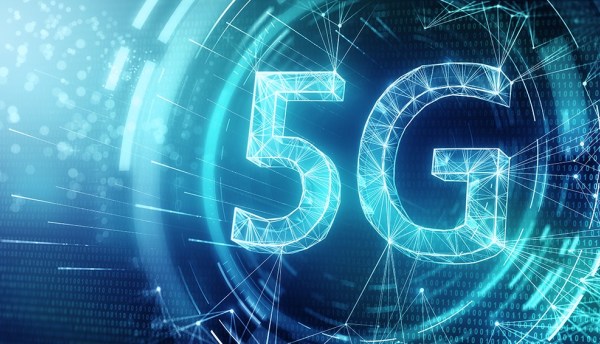A new telecom era started Wednesday, 3 April 2019
On Wednesday 3 April 2019, South Korea’s three mobile phone carriers (SK Telecom, KT, and LG Uplus) began offering 5G mobile services for ordinary smartphone users with the launch of the Samsung Galaxy S10 5G smartphone model. Korean telecom firms began officially selling Samsung’s Galaxy S10 5G, which is the only 5G-enabled smartphone in the […]

On Wednesday 3 April 2019, South Korea’s three mobile phone carriers (SK Telecom, KT, and LG Uplus) began offering 5G mobile services for ordinary smartphone users with the launch of the Samsung Galaxy S10 5G smartphone model. Korean telecom firms began officially selling Samsung’s Galaxy S10 5G, which is the only 5G-enabled smartphone in the world as of today.
There was a battle between the Korean telecom firms and the U.S. carrier Verizon for the title of the world’s first commercial fifth-generation (5G) network. The Korean carriers were originally scheduled to begin their service Friday 5 April 2019, but moved the date up to Wednesday night ― about two hours earlier than Verizon ― following rumors that Verizon would launch its service Thursday. So technically speaking, the Koreans beat the US carrier by two hours to lunch the new network. Whether or not that matters is a different issue.
The Korean telecom industry spokesperson downplayed Verizon’s 5G services pointing out that the network does not comply with the latest third Generation Partnership Project (3GPP) 5G New Radio (NR) standard. This is because Verizon uses fixed wireless access technology for its 5G services, which uses a fixed antenna to communicate with nearby cells that provide wireless access to the internet. “While Korean telecom firms came up with their 5G services complying with the 3GPP standards, Verizon uses fixed wireless access technology for what it calls 5G services. Korea’s 5G services are fully optimized for mobility as their services rely on mobile networks to deliver 5G,” the spokesperson said. On coverage, Verizon only covers two cities as of now ― Chicago and Minneapolis. South Korea’s three carriers have a wider coverage, with a plan to expand their combined coverage to 85 cities by the end of the year.
The South Korean government is proud of the current achievement, as is evident in the statement by You Young-min, the South Korean minister for science and information technology: “The government and private companies came together to achieve the world’s first commercialized 5G services and this proves once again our country is undoubtedly the top powerhouse in information and communications.”
According to the Vanguard (UK), “Ordinary consumers in South Korea, which has one of the world’s highest smartphone penetration rates, will be able to connect to 5G services from (last week) Friday – the original launch day – when Samsung begins sales of the Galaxy S10 5G, the world’s first available smartphone with the technology built-in.”
Verizon’s network will work with Lenovo’s Moto Z3 smartphone, provided the phone is fitted with a special accessory. Note that the US carrier AT&T launched a 5G-based system in parts of 12 cities in December 2018. However, this was limited in scope in the sense that the network is only accessible to invited users who had to use a free hotspot device, rather than paying customers with mobile phones.
As for other countries, Chinese firms have invested heavily in the technology – as reported in the 18 February 2019 article in this column, while Japan’s mobile carriers are planning to develop 5G service in time for the 2020 Olympics in Tokyo.
In case you are wondering about the big deal with 5G, here are a few; with the most basic advantage being speed. That is, with 5G, the speed of communication could (theoretically) be up to 1000 times faster than what you see with your current (4G) device. In practical terms, you’ll at least see speedups of up to 100. This means that movies and videos previously taking minutes to download may now take less than a few seconds. You will no longer need to wait for the web to load.
This kind of capability is great for virtual/augmented reality, gaming, or other use cases that require large bandwidth. Also, and as described by Hussain Fakhruddin, “Along with artificial intelligence (AI) and edge computing, 5G wireless technology will be right at the heart of the burgeoning Internet of Things (IoT) revolution over the next half a decade or so. Apart from expanding the realms of possibilities for Industrial Internet of Things (IIoT), 5G is also expected to play a major role in the development of Industry 4.0 in general, smart city applications, smart industrial software, powering connected cars, and smart homes & buildings. Seamless mobility, negligible latency, full scalability, and (hopefully) reliability will help 5G in making many high-end, mission-critical IoT projects implementable with ease. The general feeling is that the improved performance levels and network capacities of 5G technology will make it a key driver of ‘massive IoT’.” The 5G network is also is expected to help resolve the “last-mile” issue.
There are a few anticipated challenges with 5G, however; such as the uncertainties over coverage and radio frequencies. The portion of the radio frequency used for 5G is already overcrowded, so that the possibility is significant that there will be some lingering problems with data transmissions (i.e., in sending/receiving signals). It is also expected that significant data and signal losses may occur due to a myriad of factors. Finally, some doubts remain over how 5G will handle critical security and privacy concerns.
